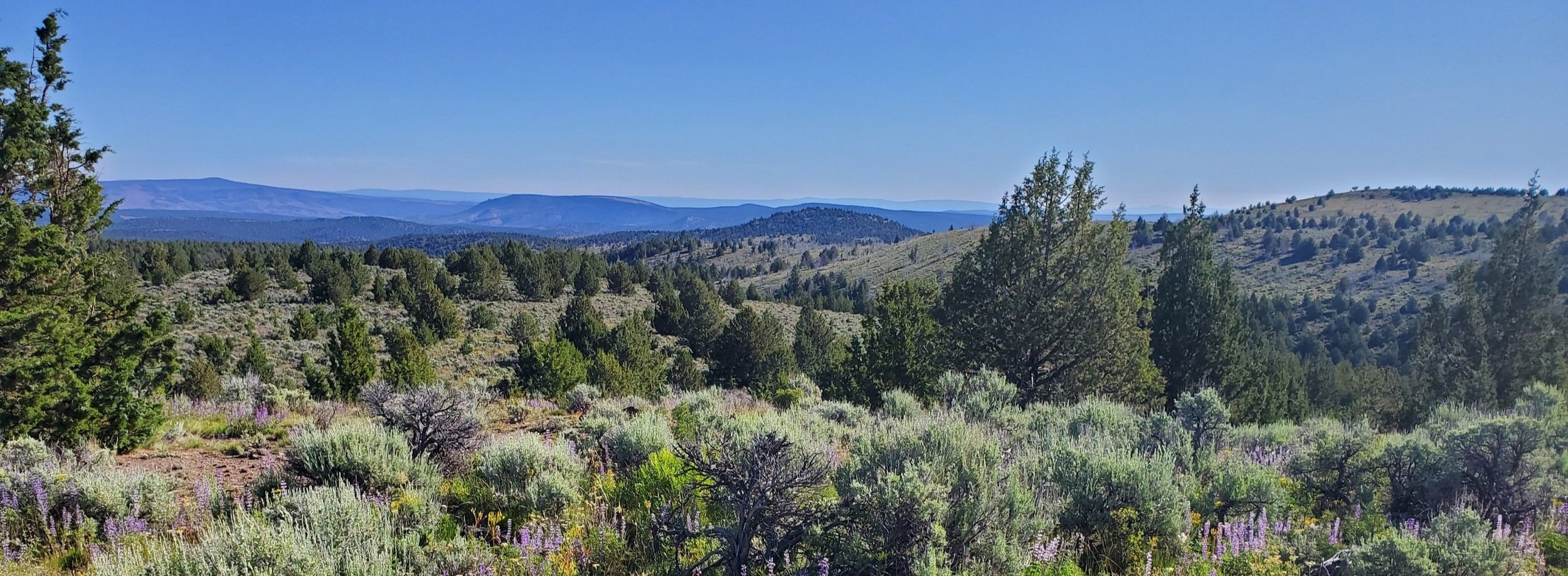
New CCAA enrollment brings lands into focus for sage-grouse
Large Ranch Links Critical Habitats
Stitching the PACs Back Together
There is an opportunity to grow a core sagebrush ecosystem on the line between Crook and Deschutes Counties.
With large investments, dedicated land managers, and careful planning, we expect to see huge benefits to wildlife and the plant communities.


Crook SWCD recognized this important property in 2020 as a critical site for restoration and began collaborating with the ranch manager to develop an OWEB grant. The substantial restoration grant capitalizes on the wide variety of aspects and elevations present on the property while pinpointing distinct areas to enhance the plant communities based on topography. This grant encompasses numerous practices aimed at restoring the natural ecology of the region, such as incorporating fire to rejuvenate aspen groves, stimulate understory growth, and suppress juniper invasion. Additionally, the project safeguards wet meadows from cattle grazing and has cleared approximately 4,300 acres of juniper. Enthusiasm for this initiative is shared among agency and university biologists, who collected tracking data from sage-grouse and mule deer during their seasonal migrations up and down the slopes of the ranch. Implementing this project connects the ongoing juniper treatment at lower elevations to the higher elevation habitats.
The ranch owner and manager’s eagerness for the conservation work prompted Crook SWCD to inquire if they would be interested in enrolling in the Candidate Conservation Agreement with Assurances (CCAA) program. A CCAA is a long-term agreement that establishes a 30-year conservation plan to tackle all identified threats to sage-grouse on the property. Participation in this program requires a substantial investment from the landowner, as they are obliged to continually advance the property’s capacity to support wildlife by maintaining and improving their land.
Abigail Papke, Crook SWCD’s CCAA program manager, spent two summers gathering baseline data on the property to evaluate the ecological condition and trends of each pasture. This data is compiled into a report and utilized to devise conservation measures to enhance the conditions. The initial assessment revealed 30,143 acres of State C habitat. With all completed and planned juniper projects, they anticipate that approximately 25% of the State C will transition to State A or B when the property is re-inventoried in 2030. Additional conservation measures include removing 8 miles of fencing to reduce wildlife injuries and enhancing troughs to facilitate use by the ranch and RFPA for filling engines in the event of a wildfire.
Hundreds of acres were also treated on surrounding public lands to create a large footprint within the Brothers/North Wagontire PAC. Additionally, another 1,900-acre juniper project was funded through state and federal agencies on adjacent public lands that the ranch leases, with planning for those projects scheduled for this Fall.
“The areas of treatment have been strategically implemented due to their proximity to both sage-grouse spring habitat and higher elevation meadow habitat. Not to mention, the significant improvement to our flourishing bitterbrush stands is essential for the mule deer winter range. We have a 1,800-acre prescribed fire scheduled, along with another 1,500 acres of Phase 3 western juniper treatment that includes pre- and post-monitoring research to further education and outreach regarding western watershed ecology and hydrology.” – Ranch Manager

